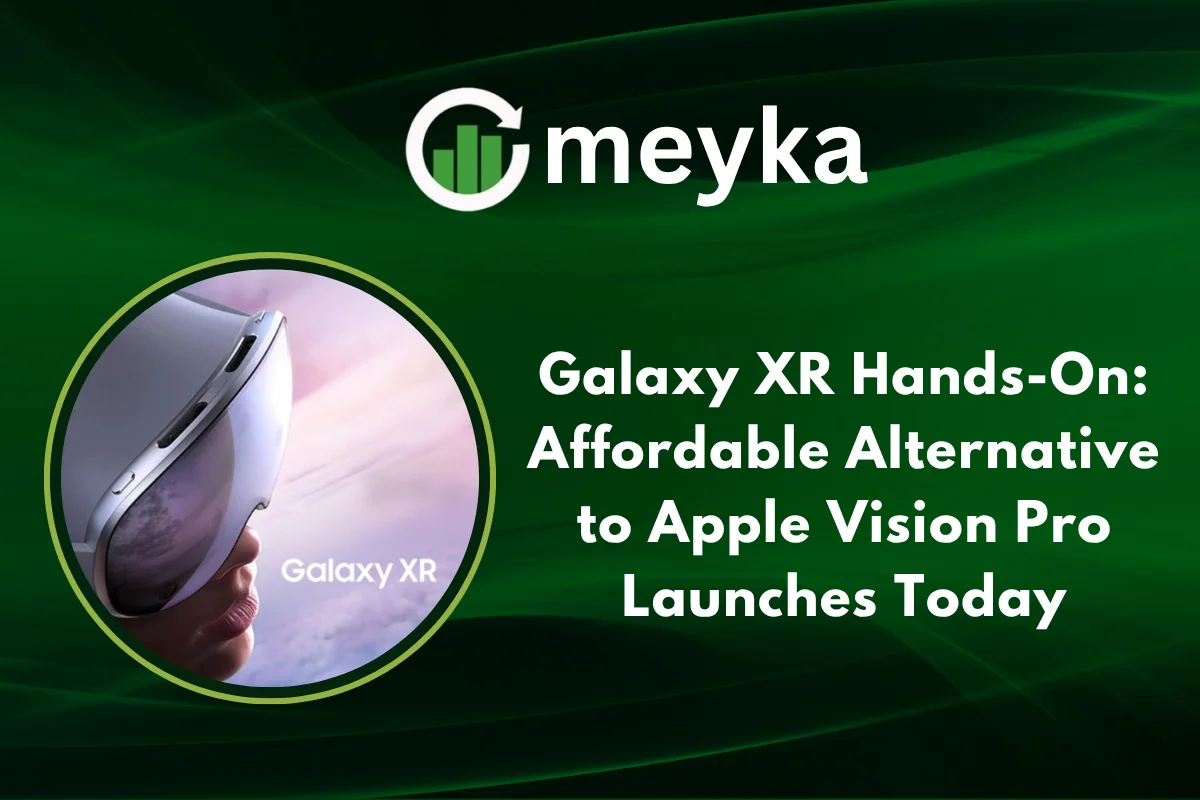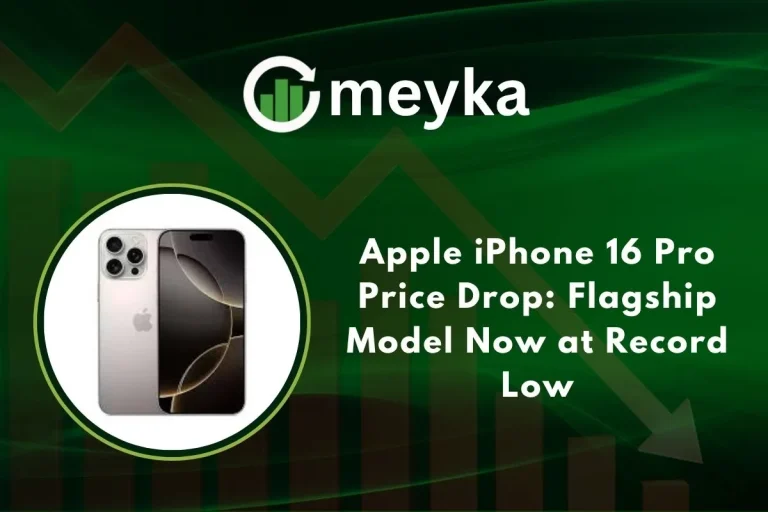Galaxy XR Hands-On: Affordable Alternative to Apple Vision Pro Launches Today
Today marks the launch of the much-anticipated Galaxy XR, a bold new headset from Samsung Electronics that enters the realm of extended reality with a more accessible price point. For consumers eager to dive into immersive experiences, the Galaxy XR offers a serious challenge to high-end devices such as the Apple Vision Pro.
What is the Galaxy XR?
The name Galaxy XR refers to Samsung’s new mixed-reality headset, built in collaboration with Google LLC and Qualcomm Incorporated. According to recent coverage, the headset features the Snapdragon XR2+ Gen 2 platform and runs the new Android XR operating system.
It offers a dual-micro-OLED display, advanced hand and eye-tracking, and intelligent AI integration via Google’s Gemini system. Importantly, at a launch price of around US$1,799, the Galaxy XR is positioned at roughly half the price of the Vision Pro, making it a more affordable XR alternative.

Key Features and Specs: What We Know So Far
Performance & Platform
The Galaxy XR is powered by the Snapdragon XR2+ Gen 2 chip from Qualcomm, delivering high-end processing for immersive experiences. It runs Android XR, a collaboration between Google and Samsung, which supports all Android apps and offers an XR-specific UI layer. The system also integrates the Gemini AI assistant, enabling voice, gesture, and visual input across mixed-reality scenarios.
Display & Interaction
Reports suggest the headset uses high-resolution micro-OLED panels (potentially 4 K per eye) and pancake lenses for a slim profile. Hand and eye tracking abilities are built in, enabling intuitive controls without the need for external controllers in some use cases. The headset also supports passthrough mixed reality mode, enabling digital overlays on the real world, useful for productivity and spatial computing.
Design & Comfort
Samsung has reportedly prioritized comfort: the Galaxy XR weighs under 500 grams in one leak, and uses a removable battery pack to reduce bulk on the head. Recent hands-on reports also mention a detachable light shield that lets users switch flexibly between immersive VR and MR modes.
Pricing & Availability
The initial U.S. retail price is around US$1,799, which compares favourably to the Vision Pro’s US$3,499 launch price. The launch begins in South Korea and the U.S., with global availability expected to follow.
Galaxy XR vs Apple Vision Pro: A Real Comparison
| Feature | Galaxy XR | Apple Vision Pro |
| Price | ~US$1,799 | US$3,499 |
| Platform | Android XR (Google + Samsung) | visionOS (Apple) |
| Processor | Snapdragon XR2+ Gen 2 | Apple Silicon (M-series variant) |
| App Ecosystem | Android apps + XR-optimized titles | Apple App Store + visionOS tailored apps |
| Mixed Reality | Hand & eye tracking, passthrough MR | Advanced eye tracking, gesture/hand control |
| Launch Focus | More accessible entry into XR | Premium high-end headset |
Given the price differential and platform openness, the Galaxy XR may attract early adopters seeking mixed-reality experiences without the premium cost of the Vision Pro.
Why the Galaxy XR Matters: Market Implications
More Accessible XR Computing
By offering a high-performance mixed-reality headset at a lower entry price, Samsung may democratize XR experiences. High prices have excluded many consumers from buying devices like the Vision Pro, but the Galaxy XR could change that dynamic.
Boost for AI and Spatial Computing
With integrated AI (via Gemini) and a full XR environment, the Galaxy XR points toward the future of spatial computing, where voice, vision, gesture, and environment combine. This positions the device not just for entertainment but for productivity, design, and enterprise use.
Competitive Pressure & Ecosystem Shift
Samsung’s entry amplifies competition, especially versus Apple and Meta Platforms (owner of the Quest line). The open Android XR ecosystem may stimulate more developers and apps, providing fresh momentum in XR content and adoption.
Implications for Tech Stocks & AI Innovation
For observers of AI stocks and stock market trends, the Galaxy XR is a meaningful indicator. Samsung’s push into XR highlights how leading hardware firms are investing in immersive computing and AI platforms, trends that can impact stock research and long-term growth expectations for technology companies.
Potential Trade-Offs and What to Watch
- Content ecosystem maturity: Early XR headsets often struggle with app depth; success depends on ecosystem support.
- Battery life and comfort: Lightweight design is a plus, but battery endurance and fit are critical for user satisfaction.
- Global rollout and availability: Initial units are limited (reports suggest ~100,000 units for launch), which may constrain access.
- Consumer adoption risk: XR remains a nascent market; pricing and utility must align to create broad uptake.
Hands-On Insights from Early Reports
Reviewers who tested early prototypes highlight intuitive controls, high-quality display, and a comfortable fit:
“I found the controls completely intuitive and familiar… the full-colour camera was both vibrant and clear.” Android Central
These impressions suggest Samsung is delivering a polished experience from the start, important for building user trust and momentum.
Conclusion
If you want to experience immersive mixed reality with a premium-level headset at a reasonable price, the Galaxy XR offers a compelling choice. With advanced features, AI integration, and a more accessible price point, it may represent a smart first-generation device for both consumers and professionals.
However, early adoption means navigating limited content and initial availability constraints. For users willing to embrace that, the Galaxy XR could be the VR/MR entry point to watch.
FAQs
The Galaxy XR is built for standalone mixed-reality use with high-end hardware, Android XR platform, and integrated AI, unlike earlier smartphone-tethered or lesser-capability headsets.
Yes, thanks to the Android XR platform, many Android apps will be compatible, and some will be optimised for immersive XR experiences.
At launch, the Galaxy XR is priced at approximately US$1,799 in the U.S. and initially available in South Korea and the U.S., with global rollout to follow. Limited unit quantity is expected at launch.
Disclaimer:
The content shared by Meyka AI PTY LTD is solely for research and informational purposes. Meyka is not a financial advisory service, and the information provided should not be considered investment or trading advice.






